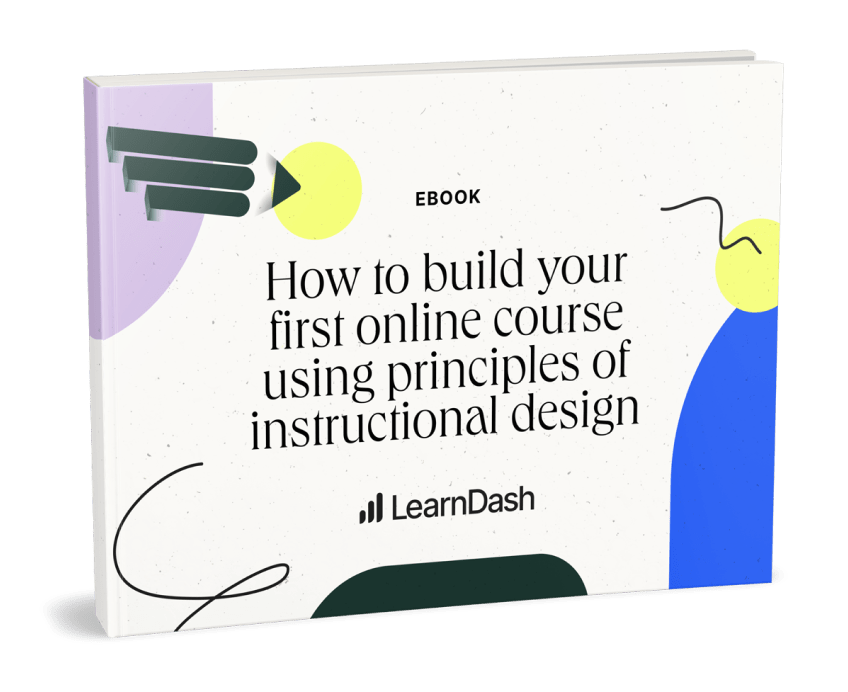
How The “IoT” is Progressing The E-Learning Industry
The “Internet of Things” is transforming how we engage with technology. What does that mean for your online course?
Over the past couple of years, a new jargon term has emerged that anyone in a technical industry will be aware of: the Internet of Things, more commonly referred to as the IoT. If you haven’t heard of the Internet of Things before, you’ve almost certainly engaged with it. Your smartphone is part of the IoT, as is your smart watch. And your car, your home thermostat, and maybe half a dozen of your appliances.
In short, the IoT is comprised of any object which used to not be connected to the Internet but now has WiFi access enabled almost by default. Anything used to make your home “smart” is part of the IoT. Your home speakers, the light fixtures you can now adjust from an app, and the doorbell camera that lets you see when someone is stealing packages off your front porch—all part of the Internet of Things.
For such a pervasive technology, its applications are only beginning to become apparent. This is largely because, while many of these devices connect to the Internet, they don’t necessarily interact well, if at all. But that is beginning to change, and as it does, online educators will have an opportunity to use IoT themselves.
Curious? Here’s an overview of what the IoT means (and may mean) for online education.
How is IoT already being used?
First, let’s look at a few common ways you’re probably already benefiting from IoT technology, such as smart phones, smart watches, and smart home devices.
Mobile learning.
It’s almost a certainty that a fair number of your students regularly access your course via their phone. If you put out audio content, they may also listen to it in their car on the way to work. IoT makes e-learning accessible in more places and in more formats.
Push notifications.
Push notifications are a feature of many IoT devices. Reminders and course updates are both the bane and blessing of many applications. Used well, and they help learners keep up with their course work. Used poorly, and they are a needless distraction at best, and irritant at worst.
Learner engagement.
Taken together, mobile learning and push notifications contribute to another key aspect of e-learning: engagement. The ability for learners to access their course anywhere that has a Wi-Fi connection, plus regular updates about lessons, forum activity, and course projects, can be a significant aid to learners who otherwise struggle to stay on track.
What are some of the downsides to IoT implementation?
Despite its benefits, IoT also poses new challenges for online education. These are issues that online educators must pay attention to, both in designing courses themselves, and when looking for providers and partners for their course delivery.
Privacy concerns.
Data privacy is a major concern for almost all engaged online users. The more our devices are connected to the Internet, the more likely it is those devices are gathering data about our daily lives without our knowledge or consent.
That doesn’t mean this data gathering is malicious—in fact, many of these lapses are entirely accidental. You gave an app permission to track how many steps you took in a day, but doing so enabled the GPS, which means it now also knows everywhere you went and how long you stayed in each location.
You may not be comfortable with that on the grounds that it is a breach of privacy. But you should also be aware of how easily a simple request to your learners for one type of data can inadvertently put you in possession of more information than you ever intended to gather.
Security liabilities.
Privacy and security aren’t the same thing. A breach of privacy may involve an application collecting an abundance of personal or sensitive data, but it can still store that data securely. Meanwhile, a security breach can steal data that the user gave knowingly and willingly (such as a password or username) without the user’s personal privacy being compromised.
IoT devices are like adding a new window to your home: they let in light and give you a broader view of the world, but they’re also another way for someone to look inside or break into your home. That’s not an argument against windows, but it is an argument in favor of some good window locks and maybe an alarm system.
Over-engagement.
Finally, remember that there can be too much of a good thing. Keeping your learners engaged is good—when it’s on their terms. But too much unwanted “engagement” is an intrusion rather than an aid.
If you’re offering your learners ways to use IoT to engage with the course, make as little of it mandatory as possible, and offer plenty of settings for them to control how they interact with your course.
Where is IoT heading for the future?
IoT seems to be everywhere right now, but to my mind, we’re only just beginning to see the implications of its use. Here’s a few ways I think IoT will be change the future of e-learning.
Interactive learning environments.
Let’s say you’ve decided to take a course on urban planning. You set your location and enable the GPS on your phone, then you go outside for a walk. As you walk, your phone occasionally vibrates to let you know that there’s something in the area relevant to your course interests.
These course bites include both general knowledge about urban planning (a short history of public transportation as you near a bus stop), and crowd-sourced information from students who have taken the course before you. One of your assignments, in fact, is to contribute a few small segments to the course from different locations in your own city.
Integration of e-learning with smart devices.
Imagine you’re taking a cooking course. These days, there are plenty of Wi-Fi-equipped kitchen appliances, from crock pots to sous-vide cookers. They come with apps that allow you to monitor cooking times and temperatures remotely, control when they turn on and off, and even raise or lower temperature.
What if those were integrated with your cooking course? Learners could get direct feedback about when to take their dish out of the oven, whether it had reached the right internal temperature, or whether it was overdone.
VR and AR technology.
Of course, he biggest advance in will come with the adaption of Virtual and Augmented Reality (VR and AR), as these devices are inevitably part of the IoT. While Google Glass was ahead of its time, AR is becoming more and more a part of daily life. It won’t be long before online courses can adapt these tools in ways that aren’t just creative and interesting, but in ways that advance learning and improve learner outcomes.
The IoT isn’t necessary for online education. But it may be useful.
As with any new technology, it’s easy to get carried away and look for ways to adapt it even if doing so isn’t necessary. While IoT technology has been helpful so far in making online content more accessible, online learners and educators have succeeded for years without it.
But for those who want to keep an eye on the leading edge of e-learning innovation, this is a key development to watch. IoT certainly isn’t going away, and it’s certain to become more streamlined in the future, leading to more helpful innovations.

LearnDash Collaborator
@LearnDashLMS







